Force of nature captured in early photos
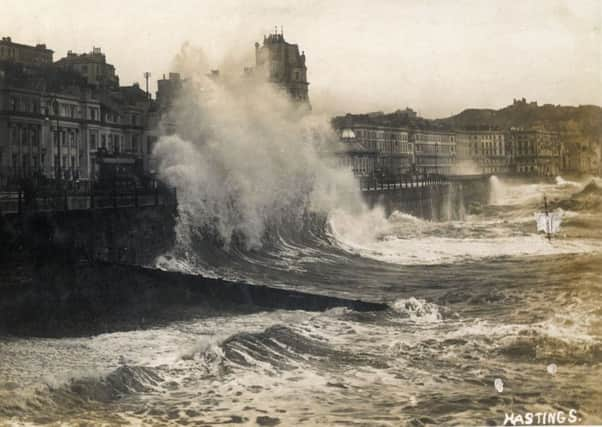

He writes. Blessed with a promenade stretching out from the Fishmarket to West Marina Gardens over three miles away, there has always been something to see.
Since the beginning of photography, as now, there has always been a fascination with a rough sea and there have always been photographers ready to record the events for posterity even if early cameras with their long exposures were not able to capture the full texture of the waves.
Advertisement
Hide AdAdvertisement
Hide AdThe public appears to have always had an appetite for these images of the forces of nature and some postcards gave the date of the event, and would have been available for sale within hours or certainly next day, whilst other publishers would hold stocks of undated cards for sale over the next few years.
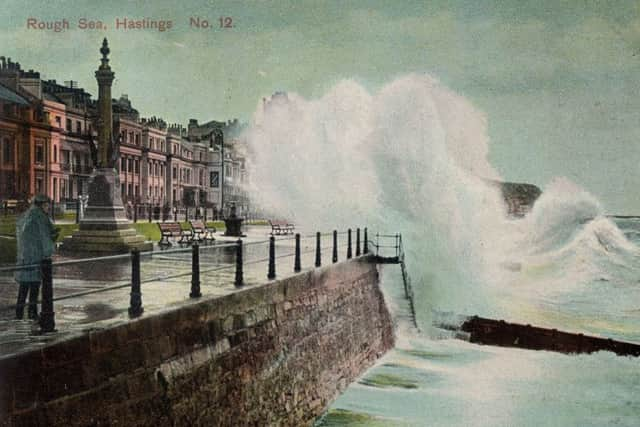

The brief notes included in the correspondence give intriguing insights into the social history of the time.
When Hastings Pier opened on the country’s the first-ever August Bank Holiday 1872, (construction having been started in December 1869) it provided an excellent viewpoint for photographers who could take their pictures from this vantage point without ruining their equipment by getting it wet. Most images of this particular ‘splash point’ are taken from the pier so that the Palace Hotel, now known simply as ‘The Palace’ (after many years being known as ‘The Pig in Paradise’) usually appears behind the wave plume.
The Palace Hotel, now a residential and commercial undertaking, opened in 1886 on the site of the White Rock Brewery which itself opened in 1831 and was one of the first businesses to open immediately west of the America Ground.
Advertisement
Hide AdAdvertisement
Hide AdThe foundation stone of the original White Rock Baths had been laid by Thomas Brassey in June 1876. The baths were embedded in the promenade that had been widened to accommodate them and were later rebuilt in the 1930’s in the Art Deco style by Hastings’ ‘Concrete King’ Sidney Little. The structure that was once the White Rock Baths is now reputedly the world’s largest underground skate park. Many photographers operated from studios ranged along White Rock, the best known being Judge’s whose premises are now occupied by Marriotts.
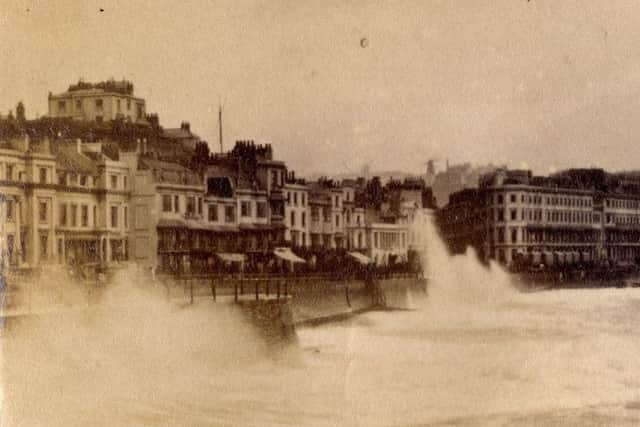

All illustrations throughout this series are from Ion Castro’s own collection and he can make available copies of many of the historic images used in this series. There’s more local history on Ion’s website, www.historichastings.co.uk or contact him - ion@1066.net.
Captions:
66. Rough Sea. Hastings.
Judge’s photographer, and it may have been the great Fred Judge himself, has managed to capture a rival photographer fleeing from the deluge clutching his bulky photographic equipment. The card was posted on April 15th 1911 to a ‘M de Silva’ who was staying at the Chatsworth Hotel that can be seen just behind the bandstand and the sender, who may have been a continental visitor, has adopted the continental habit of sticking the stamp on the face of the card.
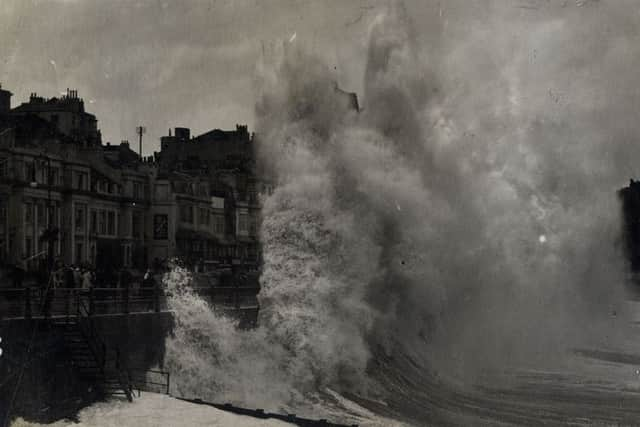

86 Rough Sea. Hastings.
A spectacular undated image from Judge’s is unposted but dates from the pre-first-war era and may have been by Fred Judge himself.
236 Rough Sea. Hastings
Advertisement
Hide AdAdvertisement
Hide AdThis Judge’s card posted on 30th April 1910 show waves striking the groynes designed to retain the shingle that the longshore drift would move eastwards. On the left the seawall will, some 20 years later, form the back wall of Sidney Little’s undergound carpark with his new promenade as its roof.
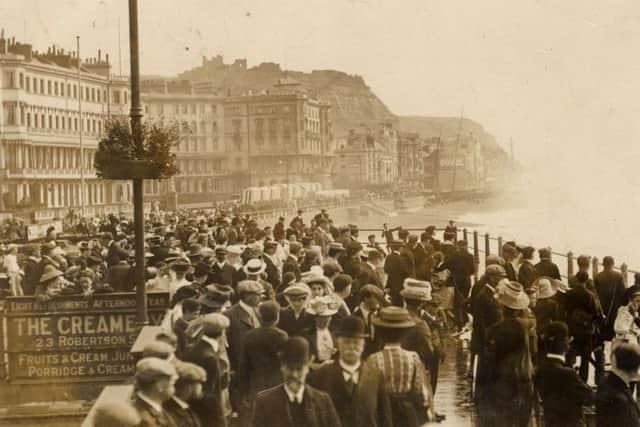

Crowd on the promenade.
From an unknown publisher this card was posted in September 1908 showing the crowd enjoying the waves that have whited out the right hand side of the image. ‘Maggie’ writes to her friend Muriel at Fordwich Rectory “I am on here, you see me (back view)...” Notice the advert for ‘The Creamery’, just round the corner in Robertson Street, where you could get you porridge & cream. In the background the bathing machines have been moved up onto the promenade to escape the waves, the ramp they were pulled up can be seen in the centre of the photograph.
Early Image.
This 1870’s albumen print from an unknown photographer was taken from the pier and shows the White Rock Brewery before it was replaced with the Palace Hotel and the promenade has not yet been built out to accommodate the White Rock Baths in 1876 and of course it will be more than another half century before Sidney Little bypasses the town centre with his new promenade.
Panorama.
This panoramic view was taken from the pier by an unknown photographer in the early years of the last century and shows a spectacular wave, to the right of the Palace Hotel can be seen the roof of the Brassey Institute in Claremont and the end of Robertson Street where all traffic has to turn inland here because Sidney Little’s new promenade is yet to be built. The sea wall on the right can still be seen as the back wall of the Underground Car Park.
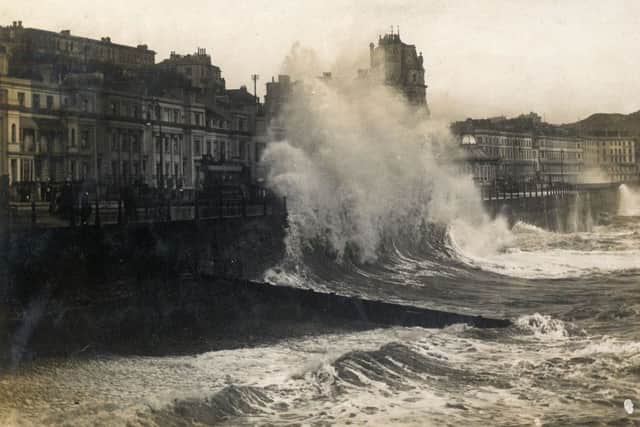

Rough Sea Hastings.
Advertisement
Hide Ad